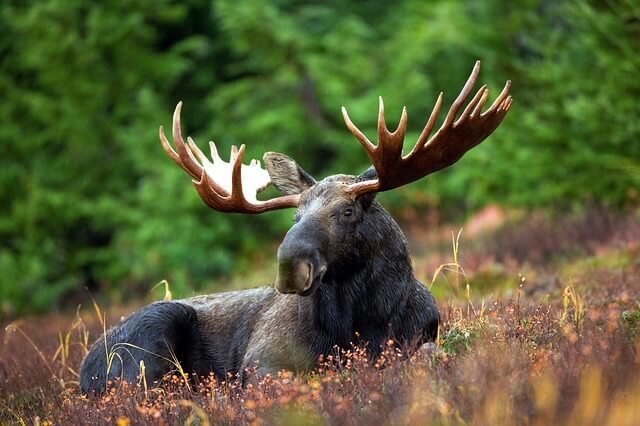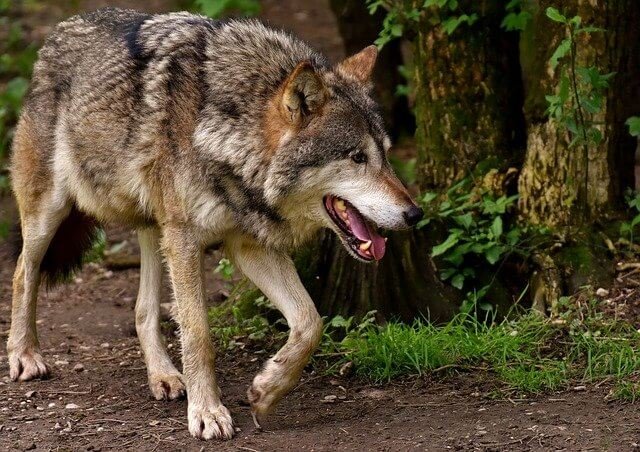Moose!
They are huge, have dark brown fur and large antlers that grow from their heads. A male moose is called a bull, a female is called a cow, a baby moose is called a calf.
And here are the most interesting moose facts you’ll need to know.
Do moose shed their antlers?
Moose are the largest members of the deer family, and they have a set of antlers that grow from bone protrusions on their heads, with an average span of 5.9 feet (1.8 m) and a weight of up to 40 pounds. They use these to fight for mates and territory during mating season, but what do they do with them when it’s not time to mate?

The answer is pretty simple – Moose shed their antlers. And when? In winter! They grow new ones each year in spring and summer, before breeding season in September. This means you can find old sets of antlers in forests all over North America. But if you want some fresh ones for your home or office this Christmas, we might be able to help!
Moose are herbivores
Moose are herbivores, which means they eat a diet of plants and other vegetation like grasses, leaves, twigs, and bark. They also eat berries in the summer months. And they love to snack on mushrooms!
Can moose swim?

Yes, Moose can swim, and they are pretty good at it. Now you wonder how deep a moose can dive? We’ve got the answer. Moose are capable of diving to depths of up to 6 meters, which is about 20 feet! And they can hold their breath for up to one minute.
Do you know how big a moose can get?
Moose are the largest living members of the deer family. The average size for an adult male (bull) Moose ranges from 6 to 8 feet tall at the shoulder and weighs between 800-1200 pounds. The female Moose (cow) are smaller than males but still stand about 5 feet tall at the shoulder with an average weight of 600-800 pounds.
When is moose mating season?
Moose mating season typically begins in late September and lasts until November. This time of year, the males are constantly on the lookout for females. They can be seen chasing them through the woods, grunting loudly to let other males know they’re interested.
The female will then choose which male she wants to mate with by letting him chase her around before finally allowing him to mount her from behind. Once a male has successfully mated with a female, he’ll leave her alone for about two weeks while she’s pregnant and give birth in early April or May.
Are moose dangerous?
They’re big, they’re furry, and they can be pretty dangerous. But are moose really as bad as everyone says they are? Moose can become aggressive during mating season in September and October or if they want to protect their calves in spring. They can also become dangerous if provoked by dogs or humans. Here’s the good news: Moose usually won’t chase you far if you run. It’s recommended to protect your head with your arms and curl into a fetus position if a moose knocked you down.
What animal hunts Moose?
Moose are hunted by predators like wolves, coyotes, and bears. Of course, they’re not an easy target!

Moose are not endangered
Moose populations have been declining in the northeastern United States and Canada for decades. Most likely because of wildfires, parasites (ticks), hunting, and habitat loss. But they’re not endangered yet, and there are still plenty of them left in Alaska and Russia.
Moose have bad eyes
Moose are known for their big brown eyes, but did you know they can’t see as well as humans? They are color blind and have a more challenging time seeing details. But don’t worry! Moose have other great senses. Like smelling and hearing.